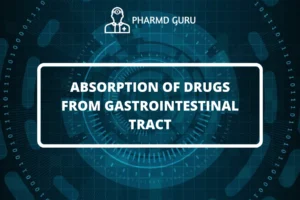Multi compartment models is a topic in Biopharmaceutics & Pharmacokinetics, which covers: Introduction to multi compartment models, Two compartment open models, Two compartment open model iv bolus administration, Two compartment open model – IV infusion, Two compartment open model – Oral administration and Loo-Riegel mann method.
SCROLL DOWN TO THE BOTTOM OF THE PAGE FOR ACTUAL NOTES
Multi compartment models are advanced mathematical models used in pharmacokinetics to describe the complex processes of drug distribution and elimination within the body. Unlike the one-compartment models, which assume a single well-mixed compartment, multi compartment models account for the existence of multiple compartments and their interconnections. These models provide a more accurate representation of drug behavior and help in understanding the pharmacokinetic profile of drugs. In this article, we will explore the two-compartment open model and its applications in different administration routes.
Two Compartment Open Model
The two-compartment open model is a widely used pharmacokinetic model that considers two compartments: the central compartment (usually blood) and the peripheral compartment (tissues). It assumes that the drug distributes between these two compartments and undergoes elimination from both compartments. The two compartment model provides a more realistic representation of drug distribution and elimination kinetics compared to the one-compartment models.
Two Compartment Open Model – IV Bolus Administration
When drugs are administered intravenously as a bolus dose, the two compartment open model accurately describes their pharmacokinetics. After the bolus injection, the drug rapidly distributes from the central compartment (blood) to the peripheral compartment (tissues). The drug is then eliminated from both compartments. The concentration-time profile in the two compartment open model for IV bolus administration can be mathematically represented using differential equations.
Two Compartment Open Model – IV Infusion
Intravenous infusion is another common route of drug administration, and the two compartment open model can be applied to describe the pharmacokinetics in this scenario. During IV infusion, the drug is continuously administered into the central compartment, maintaining a steady-state drug concentration in both the central and peripheral compartments. The infusion rate and the elimination rate constants determine the drug concentration in the compartments.
Two Compartment Open Model – Oral Administration
The two compartment open model can also be applied to oral drug administration. After oral ingestion, the drug is absorbed into the bloodstream and enters the central compartment. From there, it distributes to the peripheral compartment and undergoes elimination. The two compartment model for oral administration takes into account absorption processes, bioavailability, and first-pass metabolism, providing insights into the pharmacokinetics of orally administered drugs.
Loo-Riegelman Method
The Loo-Riegelman method is a mathematical approach used to estimate the rate constants and volumes of distribution in the two-compartment open model. It involves administering the drug as both an intravenous bolus and an oral dose, and then comparing the plasma concentration-time profiles obtained from these two routes of administration. The Loo-Riegelman method allows for the estimation of important pharmacokinetic parameters and aids in model fitting.
ACTUAL NOTES




